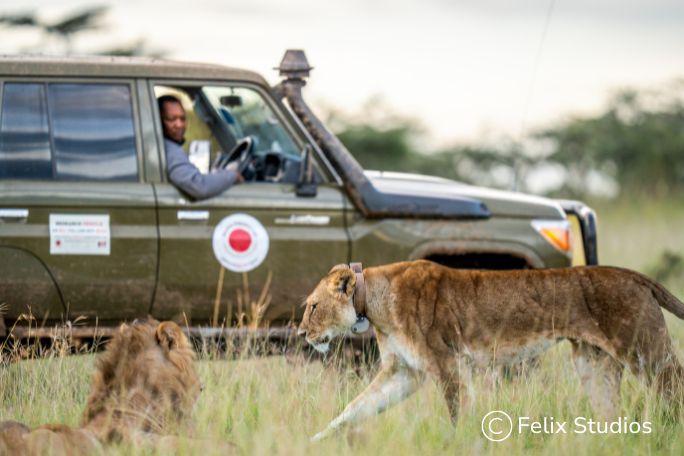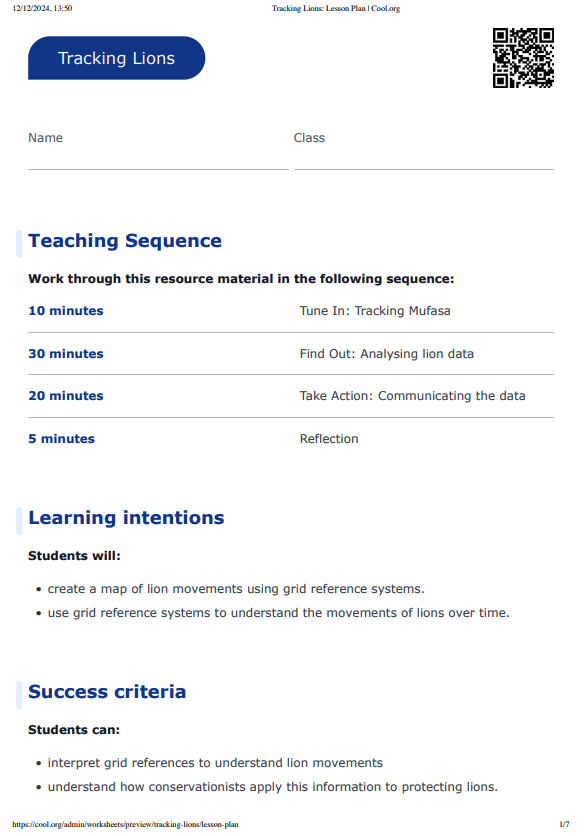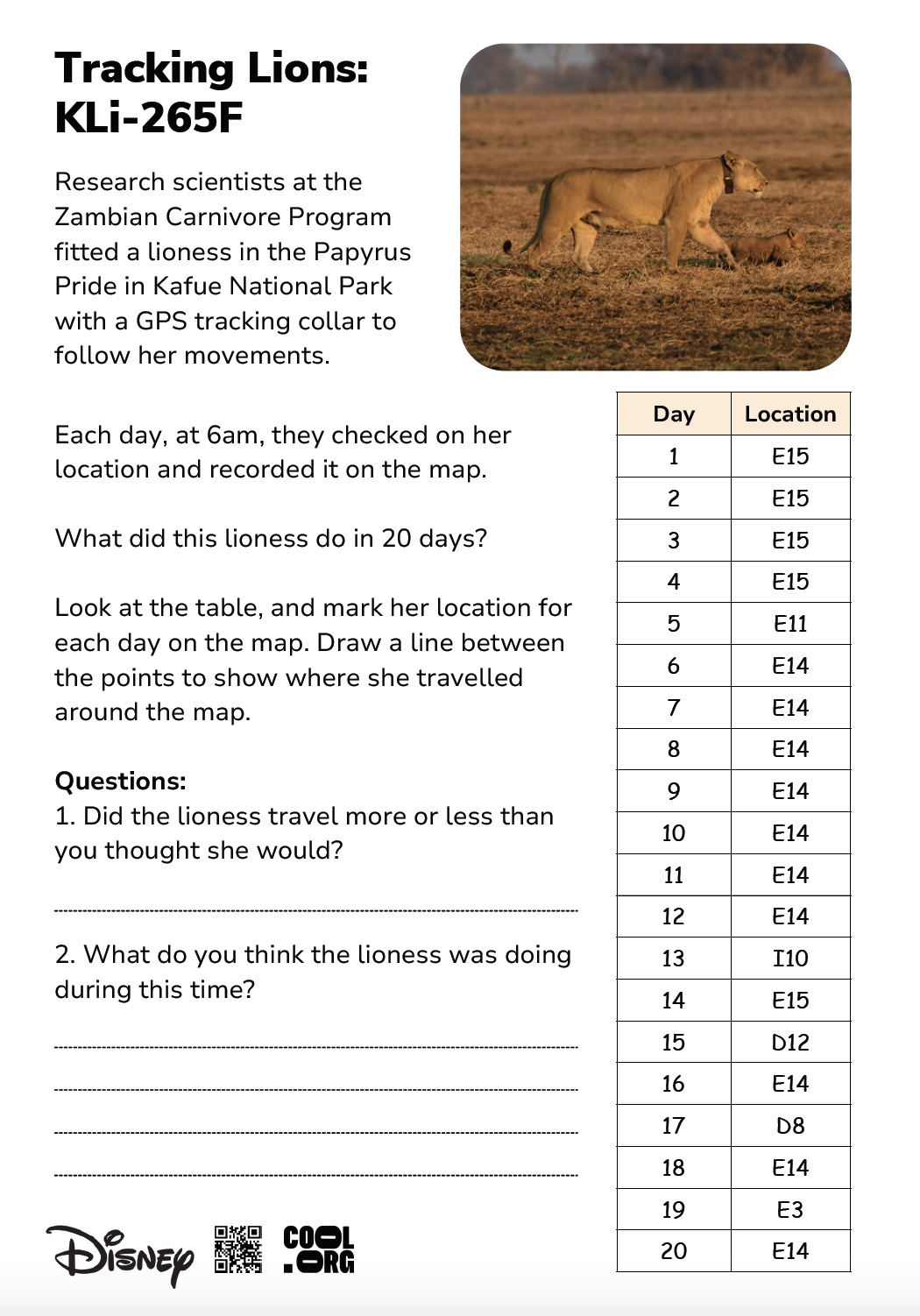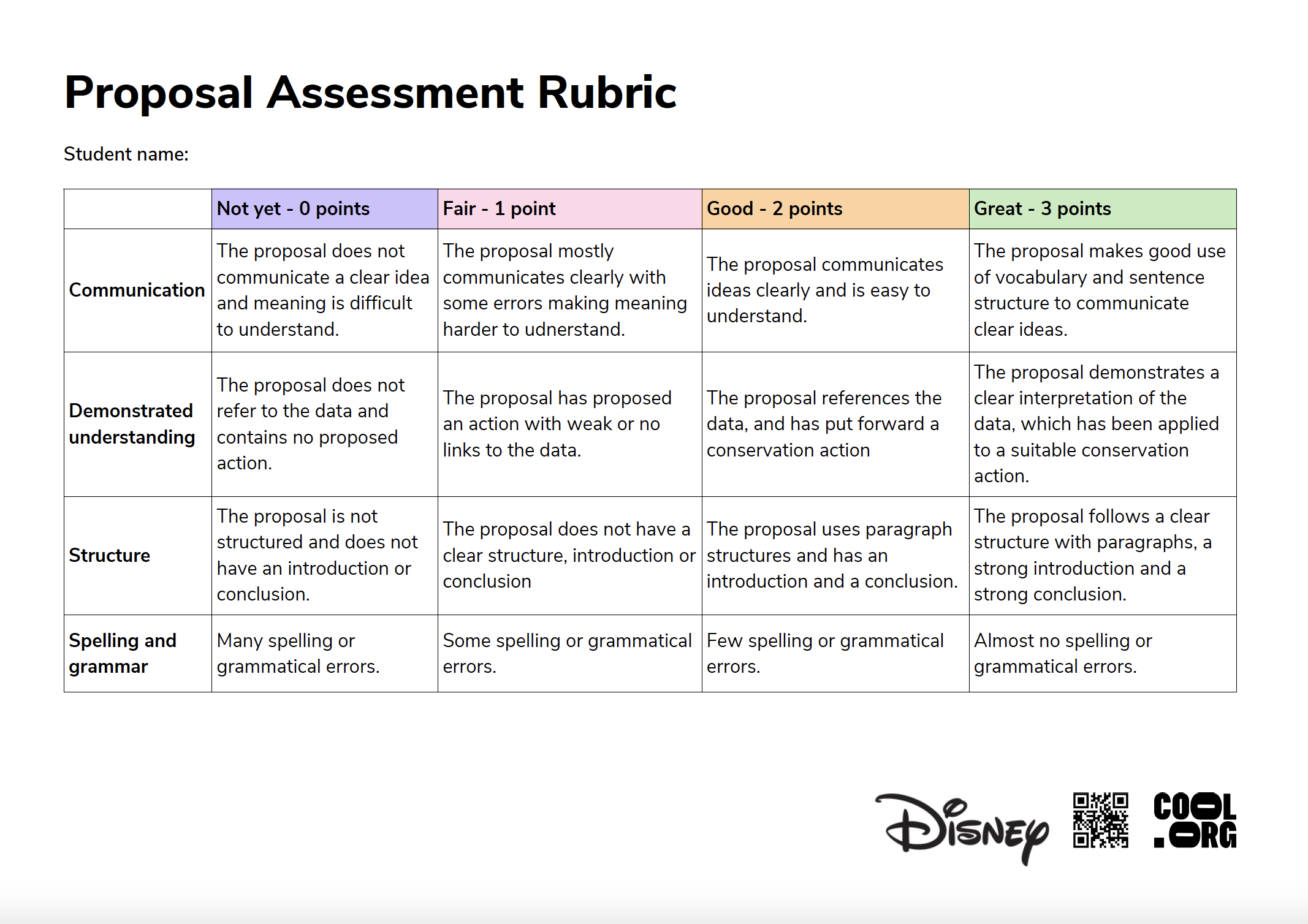Lesson summary
Students will explore how lion location data is collected and applied to conservation work. They will use maps and grid references to explore the movements of lions, and investigate how this information is used to inform conservation efforts.
Learning intentions:
Students will...
- create a map of lion movements using grid reference systems.
- use grid reference systems to understand the movements of lions over time.
Success criteria:
Students can...
- interpret grid references to understand lion movements
- understand how conservationists apply this information to protecting lions.
Lesson guides and printables
Curriculum links
Select your curriculum from the options below.
Lesson details
Skills
This lesson is designed to build students’ competencies in the following skills:
- communication
- curiosity
- problem solving
- reflection
Curriculum Mapping
Australian Curriculum (v9.0) content description:
Year 4, Mathematics
Students can:
- create and interpret grid reference systems using grid references and directions to locate and describe positions and pathways (AC9M4SP02)
Relevant parts of Year 4 achievement standards: Students create and interpret grid references. Students represent and approximate shapes and objects in the environment.
NSW Syllabus outcomes:
A student
- uses grid maps and directional language to locate positions and follow routes (MA2-GM-01)
General capabilities: Critical and Creative Thinking, Numeracy
Cross-curriculum priority: Sustainability
Level of teacher scaffolding:
UN Sustainable Development Goals
- Target 15.5: Take urgent and significant action to reduce the degradation of natural habitats, halt the loss of biodiversity and, by 2020, protect and prevent the extinction of threatened species.
Resources Required
- Device capable of sharing a video with the class
- Tracking Lions Worksheet (1 per student)
- Proposal Rubric
Additional Info
Since Disney released The Lion King, in 1994 and the world fell in love with its story of adventure, friendship, and family on the savanna, Africa has lost half of its lions.
In 2019, Disney released the groundbreaking live-action adaptation of The Lion King and teamed up with the Wildlife Conservation Network’s Lion Recovery Fund and its partners to help bring back lions in the wild. Through this collaboration, Disney and the Wildlife Conservation Network’s Lion Recovery Fund encouraged audiences to “Protect the Pride,” urging fans and wildlife lovers around the world to participate in the conservation of lions and their habitats and help support local people who live alongside lions.
Now, five years later, with the release of Mufasa: The Lion King in theatres on December 19, Disney and the Lion Recovery Fund are teaming up again to continue efforts to Protect the Pride, celebrate successes to date, and grow hope for a future where lions and people thrive.
Find out more about how you can Protect the Pride here (disney.com.au/mufasa-the-lion-king-protect-the-pride).
Cool.org would like to extend our thanks to the Lion Recovery Fund and the Zambian Carnivore Programme (zambiacarnivores.org/programme) for their contribution of data, imagery and stories from the field to bring these resources to life. The Zambian Carnivore Programme (ZCP) is a Zambian-registered non-profit organisation dedicated to conserving large carnivores and the ecosystems they reside in through a combination of conservation science, conservation actions, and a comprehensive education and capacity-building effort. We would particularly like to thank PhD candidates Anna Kusler and Johnathan Reyes de Merkle and wish them the best of luck with their continued research.
Related Professional Learning
Visualise Data in the Primary Classroom
Quick Summary: Teach Year 3-6 students how to use infographics to explore and represent information, data or knowledge. Infographics can be used as a teaching and learning tool in any primary subject.
Infographics are visual representations of information, data or knowledge. They have grown in popularity because they communicate information quickly and clearly. In this hands-on course, you will build your ability to use infographics as a learning tool in your classroom. You’ll discover how to understand infographics and create your own.





Welcome back!
Don't have an account yet?
Log in with:
Create your free Cool.org account.
Many of our resources are free, with an option to upgrade to Cool+ for premium content.
Already have an account?
Sign up with:
By signing up you accept Cool.org's Terms and Conditions(Opens in new tab) and Privacy Policy(Opens in new tab).